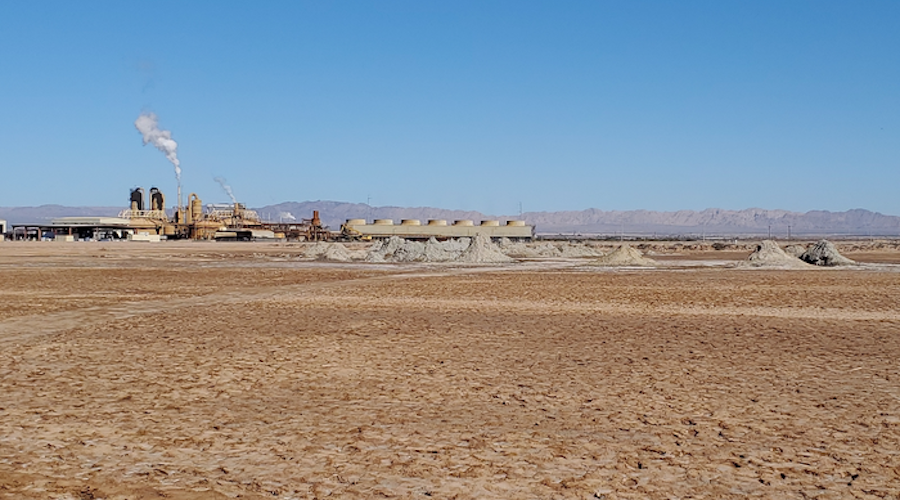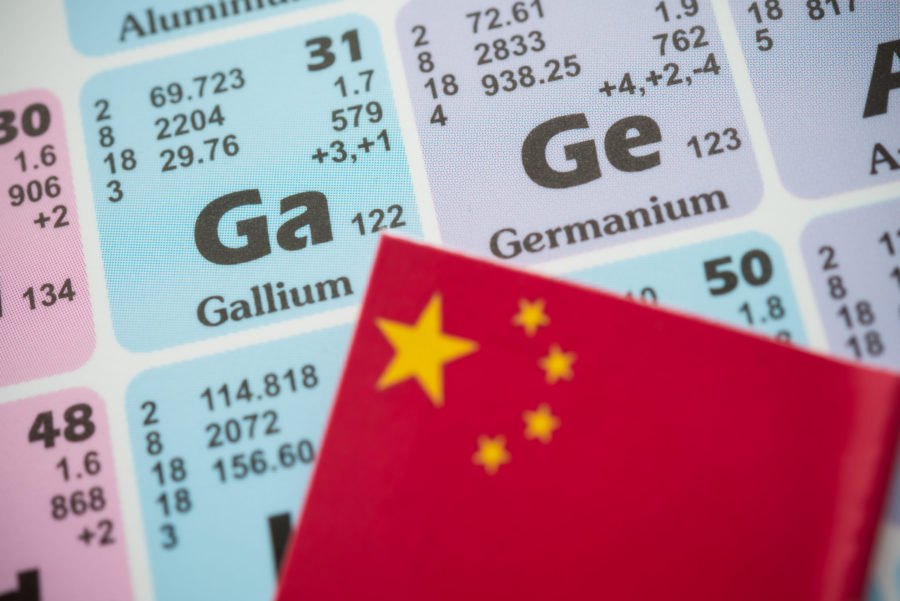New project to investigate if California’s Lithium Valley is world’s largest brine source of lithium

Researchers at the Lawrence Berkeley National Laboratory, UC Riverside, and Geologica Geothermal Group have launched a project to both quantify and characterize the lithium resource in the Salton Sea geothermal field in California.
After receiving a $1.2 million grant from the US Department of Energy, the scientists plan to use an electron microscope and other advanced analytical tools to learn what are the mineral sources of lithium in the area and whether the rocks will “recharge” the brine with lithium after it has been extracted from the produced fluids.
At present, 11 commercial plants operating at the Salton Sea field produce geothermal energy by pumping up hot fluids from deep underground and converting the heat to electricity. Normally, the cooled fluid would simply be reinjected underground, but the researchers want to first extract the lithium from the brine before injecting it back.
The project team will also investigate the potential environmental impacts of this process. In other words, they plan to quantify how much water and chemical usage is needed for lithium extraction, how the air quality changes during the extraction process, and potential induced seismicity from the associated geothermal energy production.
“The Salton Sea geothermal system is the primary potential geothermal resource for lithium in the United States, and it’s a world-class resource,” Pat Dobson, the Berkeley Lab scientist who is leading the project, said in a media statement.
“But there is a wide range of estimates in terms of the size of the resource, and also not a great understanding of where the lithium comes from, the rate at which it would decline over time with the extraction of lithium from the geothermal brine, and whether it would be replenished by the remaining lithium in the host rocks.”
Largest brine source of lithium in the world?
According to Dobson and his colleagues, doing a back-of-the-envelope calculation, it is possible to estimate that there’s somewhere between 1 and 6 million metric tons of lithium in the so-called Lithium Valley.
“That would be the largest brine source of lithium in the world, bigger than any individual South American salar deposit,” UC Riverside geochemist Michael McKibben said. “So, it’s a big number, and it means the potential is there for – again, back-of-the-envelope calculations – something like 50 to 100 years’ worth of lithium production.”
McKibben has been studying the Salton Sea since the 1970s and together with Maryjo Brounce, leads the UC Riverside effort in this project. Their goal is to use instrumentation to map out where the lithium is located within the reservoir rocks, and what form it is in. This geochemical characterization will then be incorporated into models to assess the rate of resupply of lithium to geothermal fluids.
“We’ll look at how quickly might you expect the resource to be regenerated – is it centuries? Decades?” Brounce said. “Those chemical reaction rates will depend on where in the rock lithium is stored pretty strongly, so it can help create a predictive tool.”
To better understand the reservoir and its regeneration capabilities, the research team will use data from companies active in the area as well as published documents and field data from the state of California’s Geologic Energy Management (CalGEM) databases.
“We need better data on the chemistry of the brines and their lithium content and how it’s distributed in terms of position and depth in the geothermal field,” McKibben said.
“We’ve asked the geothermal companies to share their brine data with us. Pat and his group will put that in a database. Then if we can use the database to correlate lithium concentration with things like temperature, chlorinity, and other physical and chemical parameters, we can actually predict how much lithium might be in brine in parts of the field that haven’t been completely drilled out yet.”
More News
Is Basel III setting up a new gold-backed monetary system?
April 20, 2025 | 08:22 am
China’s export controls are curbing critical mineral shipments to the world
April 20, 2025 | 08:15 am
{{ commodity.name }}
{{ post.title }}
{{ post.date }}




3 Comments
ed ski
What’s up with starting another project that requires water, you know, that stuff that your thirsty citizens have to conserve and the state cannot responsibly provide ?
Michael Cleary
From Michael Cleary
Klotho Nanaoscience UK Ltd
our work shows that tetrachloroaluminiumate with graphene nets can compete with litium technology fo EV batteries. Less mas better charge speedier charge rate
Salters
Hastings UK
Michael Cleary
Sorry about the typos – late at night
Michael